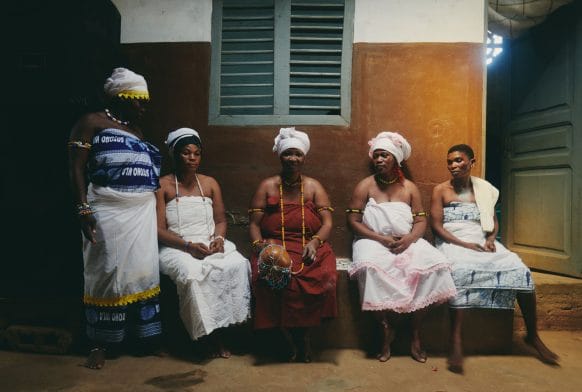Carved wooden mask
This type of face mask depicts the essential aspects of the Poro - male initiation society of the Senufo people. The Senufo people have two important institutions: The Poro (for men) and the Sandogo (for women). Young, uninitiated children are 'swallowed' by the Great Mother, and returned as men or women to their respective villages after this process of initiation – which includes learning various traditional skills and the 'secret' language of either the Poro or Sandogo. The male-female aspects so prevalent in the two initiation systems are also recurrent in the masks. The Senufo have large repertoires of mask because of the central role the masquerades played in the society –from birth to death.
This face mask appears to fall within the category of the 'nayiligi' or 'freshly beautiful' masks. Many dancers of such masks will be many portraying women's gestures. The beauty referred to here is not that of the mask but that of the moments of the dancer or performer. A key characteristic of these types of face mask is the either animal or morphed figures that appear on the forehead. These may bear spear ritual connotations that we may not be able to decipher. It may also be a symbolic representation of some metaphor that is directly relevant to the role the mask played in the society.


































































































































































































































































































































































































































































































































